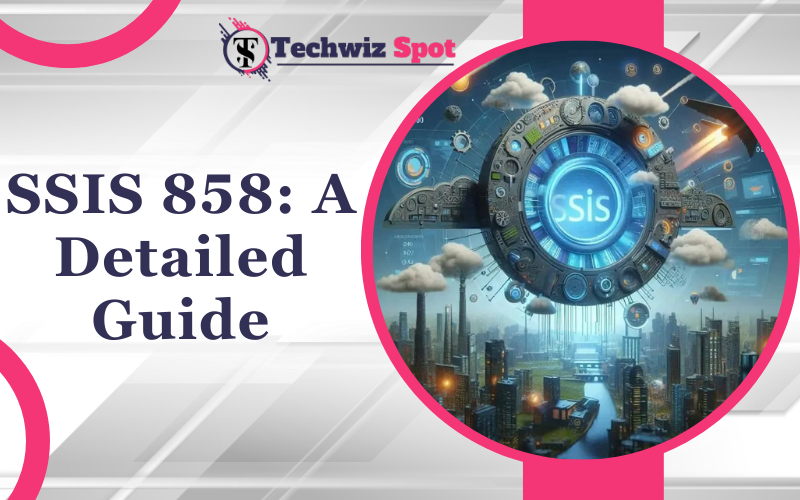SSIS 858 is a key concept in the realm of SQL Server Integration Services (SSIS). SSIS is a tool developed by Microsoft to simplify data integration and workflow applications. It is part of Microsoft SQL Server and is used for data migration, transformation, and management tasks. The “858” in SSIS 858 is often linked to specific practices, updates, or features within the SSIS ecosystem. In this article, we will explore SSIS 858, its relevance, features, and applications.
What is SSIS?
Before diving into SSIS 858, it’s essential to understand SSIS itself. SSIS stands for SQL Server Integration Services. It is a platform used to build data integration and transformation solutions. With SSIS, users can extract, transform, and load (ETL) data from various sources into a data warehouse or other destination systems.
Key Features of SSIS
-
Data Integration:
SSIS allows users to combine data from multiple sources like SQL Server, Excel, XML files, and more. -
Automation:
Tasks such as data cleaning, migration, and transformation can be automated, saving time and effort. -
Scalability:
SSIS is scalable and can handle large datasets, making it suitable for enterprise-level tasks. -
Error Handling:
Built-in mechanisms help manage errors during ETL processes. -
Visual Development Environment:
SSIS includes a drag-and-drop interface that simplifies workflow design.
The Meaning of 858 in SSIS
The “858” in SSIS 858 does not point to a specific feature or version. Instead, it could refer to:
- A specific use case or scenario in SSIS development.
- A reference code in documentation, indicating advanced configurations or error messages.
- Industry-specific workflows leveraging SSIS.
For clarity, let’s consider 858 as a symbolic term representing advanced SSIS workflows or configurations.
The Importance of SSIS 858
SSIS 858 highlights advanced capabilities in data transformation and integration. Understanding it involves focusing on key areas like advanced data transformations, custom coding, and optimization.
Advanced Transformations
Transformations are operations that convert data from one format to another. In SSIS, there are many built-in transformation tools. For SSIS 858, the focus is often on advanced transformations like:
-
Lookup Transformation:
Used for matching and fetching related data from other tables or sources. -
Derived Columns:
Enables creating new data fields by applying formulas or expressions to existing data. -
Conditional Splits:
Helps split data into multiple streams based on predefined conditions. -
Merge and Merge Join:
These transformations combine data from different sources in various ways.
Custom Coding in SSIS 858
While SSIS provides a visual interface for building workflows, sometimes it requires custom coding to achieve complex tasks. Developers use:
-
Script Tasks:
This allows writing custom scripts in C# or VB.NET for advanced functionality. -
Expressions:
These are small pieces of code used within SSIS to handle dynamic data flow.
Performance Optimization in SSIS 858
Performance is crucial in any ETL process. SSIS 858 emphasizes optimization techniques, such as:
-
Buffer Management:
SSIS uses memory buffers to process data. Efficient buffer management can improve speed. -
Parallelism:
Running tasks in parallel reduces execution time. -
Avoiding Blocking Transformations:
Transformations like Sort or Aggregate can slow down performance. Alternatives like pre-sorting data outside SSIS are recommended.
Applications of SSIS 858
The applications of SSIS 858 span multiple industries. Here are some examples:
-
Data Warehousing:
SSIS 858 workflows are often used to load data warehouses. The process involves integrating data from multiple sources and cleaning it before loading. -
Business Intelligence:
Companies use SSIS to prepare data for analysis. Advanced workflows (like those associated with 858) ensure data is reliable and ready for insights. -
Migration Projects:
Moving data from legacy systems to modern platforms often involves SSIS. Custom coding and optimizations in SSIS 858 make migration seamless. -
E-commerce:
Online retailers use SSIS to manage inventory data, customer information, and transaction records. -
Healthcare:
In healthcare, SSIS handles sensitive patient data, ensuring it is cleaned, validated, and loaded securely.
Challenges in Implementing SSIS 858
Like any technology, SSIS has its challenges. Understanding these can help developers prepare better:
-
Complexity:
Advanced workflows can become complex. Proper documentation is necessary to manage these. -
Performance Bottlenecks:
Poorly optimized SSIS packages can cause delays. Regular performance testing is critical. -
Learning Curve:
While the interface is user-friendly, advanced features require training.
Best Practices for SSIS 858
To use SSIS effectively, follow these best practices:
-
Plan Ahead:
Define workflows and transformations before building the package. -
Keep Packages Modular:
Break down large workflows into smaller, manageable pieces. -
Test Frequently:
Regular testing ensures workflows function as expected. -
Monitor Logs:
Logging helps identify and resolve issues quickly. -
Document Everything:
Keep records of workflows, scripts, and settings for future reference.
Conclusion
SSIS 858 represents advanced capabilities in SQL Server Integration Services. It involves leveraging complex transformations, custom coding, and optimization techniques to create powerful workflows. By mastering these concepts, businesses can handle their data more efficiently and make informed decisions.
Whether you’re building data warehouses or managing migration projects, SSIS 858 offers robust solutions. With practice and a solid understanding, even challenging workflows can become manageable.
By following best practices and continually improving skills, users can unlock the full potential of SSIS, including the advanced concepts encapsulated by SSIS 858.



